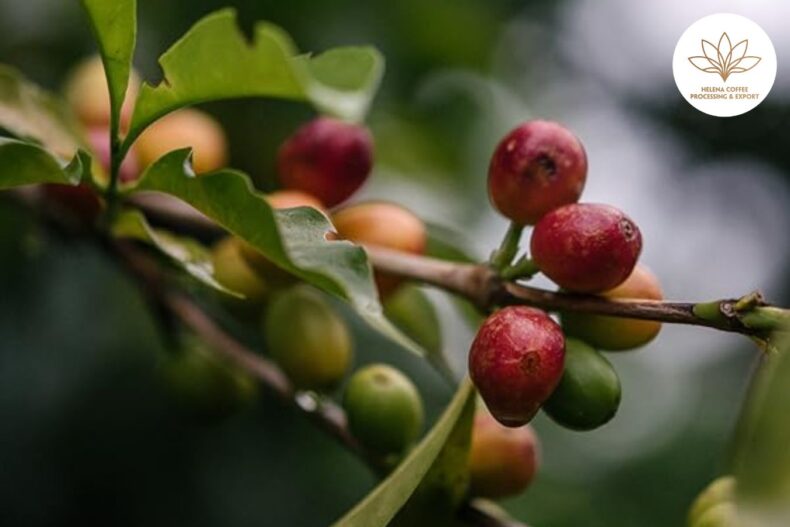
Decaffeination Processes In Decaf: CoffeeDecaf coffee (decaffeinated coffee) is a little-known fork in the high-quality industry. Partly because of rare coffee who loves to find something that reduces caffeine, partly due to doubts about the health of the caffeine reduction process using organic solvents.
After decades, people have mentioned Decaf coffee in a completely different light. Is there a Specialty Coffee Decaf? Let’s find out with Helena! Especially the younger generation, often choose less caffeine. For this reason, this article summarizes the main decaffeination processes to help you understand which coffee you need.
Decaf coffee
Before diving into the actual matter, let’s cover some basics. The biggest challenge in decaffeination is without removing many of the flavor compounds that make coffee so delicious. All coffees are decaffeinated while still green, and because caffeine is water-soluble, all processing methods use water.
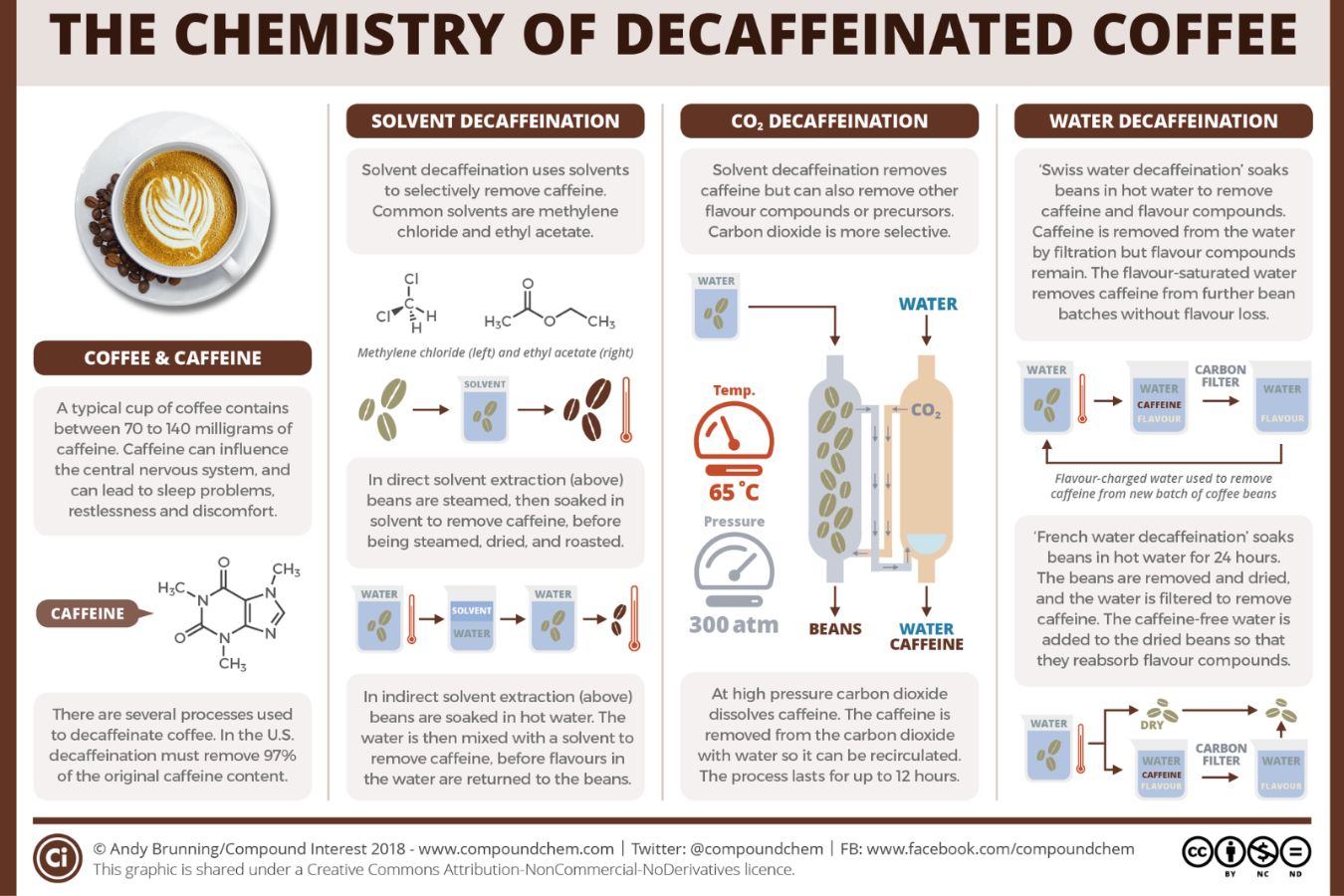
Decaffeinated coffee is still hotly contested in terms of taste and appeal. While some only use the Decaf form of coffee, others do not recognize Decaf as coffee. This article doesn’t tell you which view to take, but it can tell you a little about some lesser-known aspects of decaffeinated coffee.
Organic solvent method
In this method, the coffee will be soaked in hot water before drinking in Methylene Chloride (MC) or Ethyl Acetate (EA). These solvents are then recovered in the evaporator, where the caffeine is recovered for other uses.

After washing and steaming to altogether remove the solvent, the coffee beans are dried and can continue to be roasted like any other green coffee.
Health effects of solvents
During processing, if the coffee is soaked and heated directly in the solvent, the flavors will quickly diffuse with the caffeine); it is common to steam the coffee first and then transfer it to the solvent medium. Each).
This way, the solvents absorb most of the caffeine and leave more flavor compounds behind. AFTER THE REQUIRED CAFFEINE CONTENT IS OBTAINED, the EA residue is eliminated by re-steaming the beans.
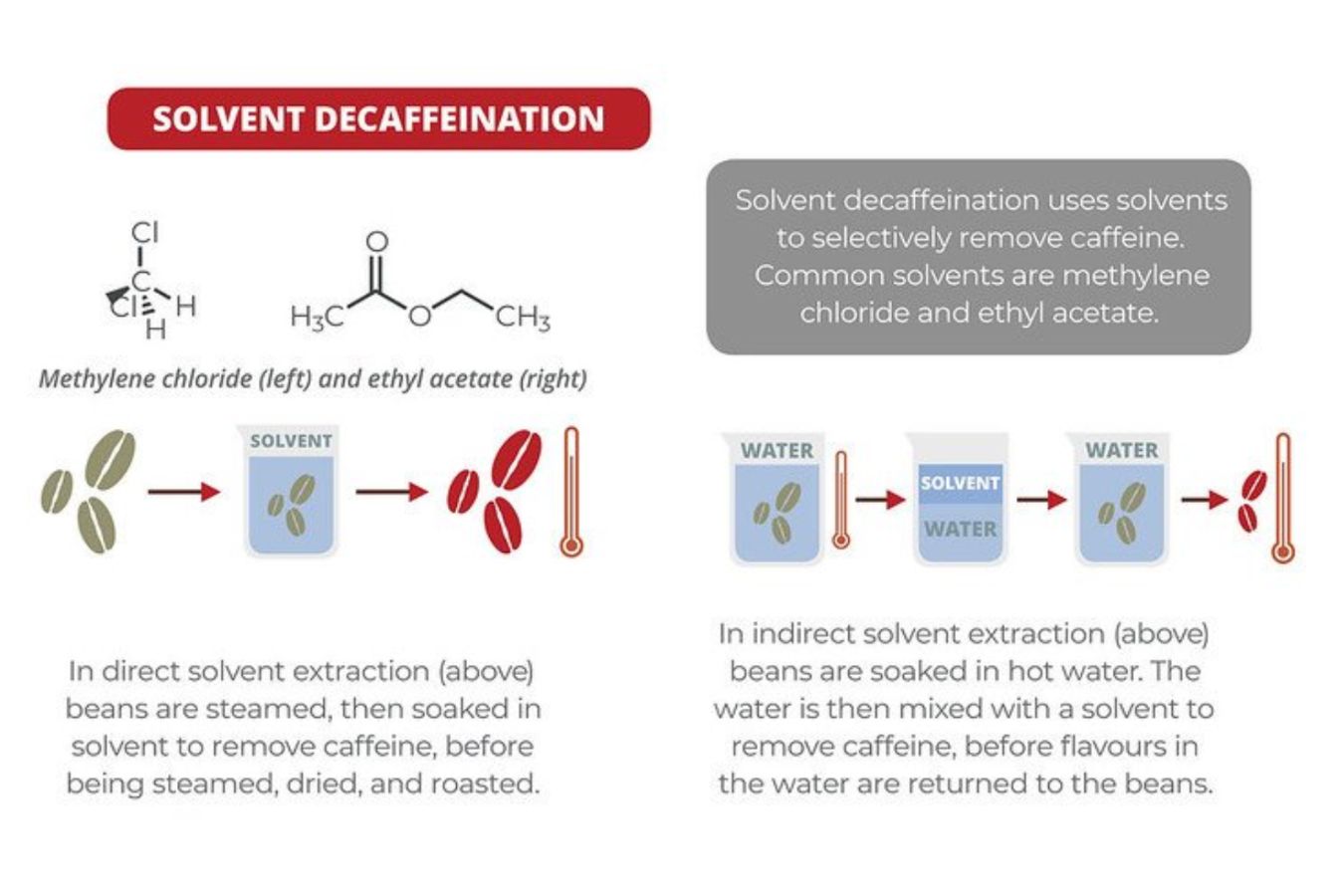
The US Food & Drug Administration has limited the amount of MC & EA to less than ten parts per million (0.001%) in decaffeinated roasted coffee. But because MC can lead to an increased risk of certain cancers.
There should be some concern about the use of this solvent. While EA is usually derived from fruit or sugar cane, the only problem is that EA still has a specific odor and can remain in coffee after decaffeinated.
Water reduction (SW) technique
First of all, water treatment is known as a decaffeination method with no added chemicals but using only the purest water. The most popular water producer is Swiss Water.
Water is not the best choice for decaffeinating coffee because other essential substances in coffee can be washed away. Therefore, a more advanced process has allowed us to avoid this by combining the caffeine-free extract and activated carbon. This process was first developed in Switzerland in 1933 and commercialized in 1979, popularizing it as Swiss Water.
Swiss Water Removal Process
After soaking, coffee beans will be added to a caffeine-free green coffee extract blend. Due to the difference in concentration, the caffeine in the seeds will seep out and dissolve in the extract.
The extract is further passed through activated carbon to remove the caffeine and reused next time. This method is more expensive than the solvent method because the extracted caffeine cannot be recovered and sold separately.
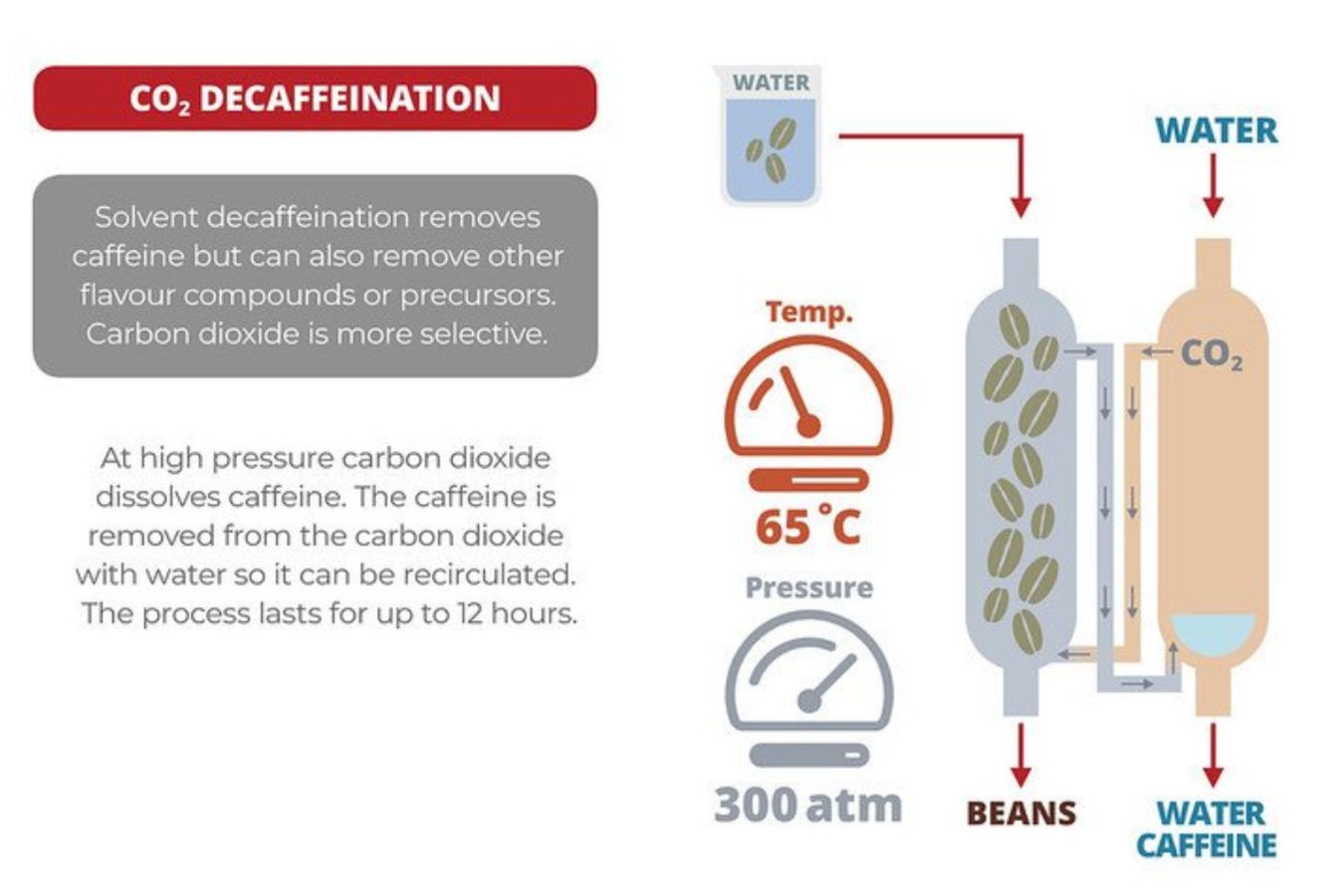
The coffee is dried, while the water is passed through a carbon filter to remove the caffeine. This caffeine-free but rich-in-flavor water is then reabsorbed by the dry coffee, so the coffee can regain some of the flavors it lost before it was dried and roasted.
Decaffeination with Supercritical Carbon Dioxide
Food scientists have recently turned to supercritical carbon dioxide as a much safer and more effective means of decaffeination.
In this process, Supercritical Carbon dioxide (SCO 2), i.e., CO 2, liquefies under a pressure of more than 450kg and a temperature of about 93°C is allowed to circulate through the coffee.
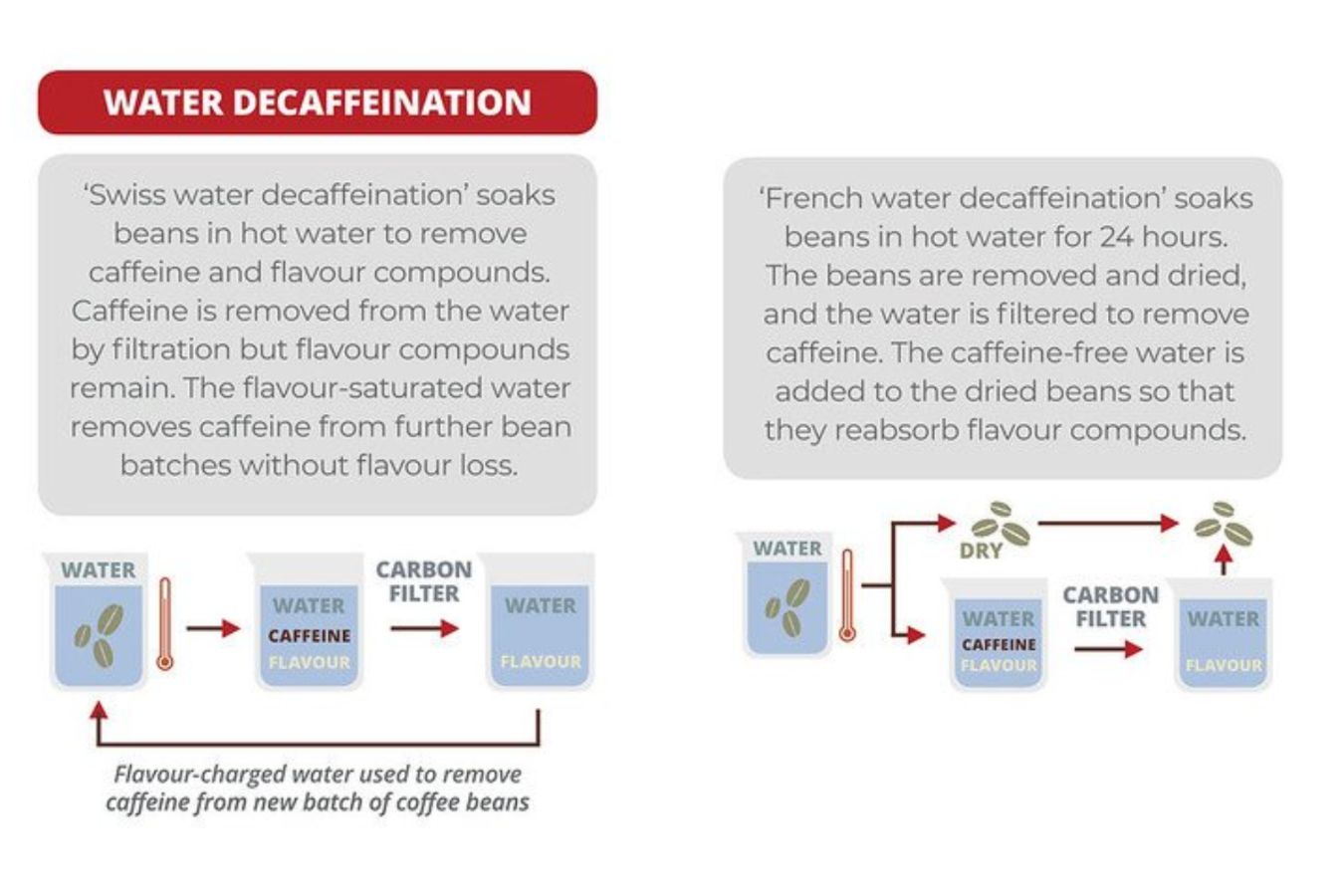
The extracted caffeine is then removed from the CO 2 by reducing the pressure enabling the CO 2 to convert to a gas, leaving the Caffeine and CO 2 recirculated in the following cycle.
With the stability of CO 2, this process takes place at a lower temperature, allowing to minimize the denaturation of other coffee components. At the same time, caffeine can be isolated and recovered for other purposes.
Pros and cons for decaffeinated coffee
The decaffeination process has significantly increased the final price of the finished coffee, but most Decaf coffees are sold for the same price as regular coffee. To do this, importers and processors often rely on using second-class green coffee, so Decaf coffee has long carried the label of “less flavor” than the original coffee.
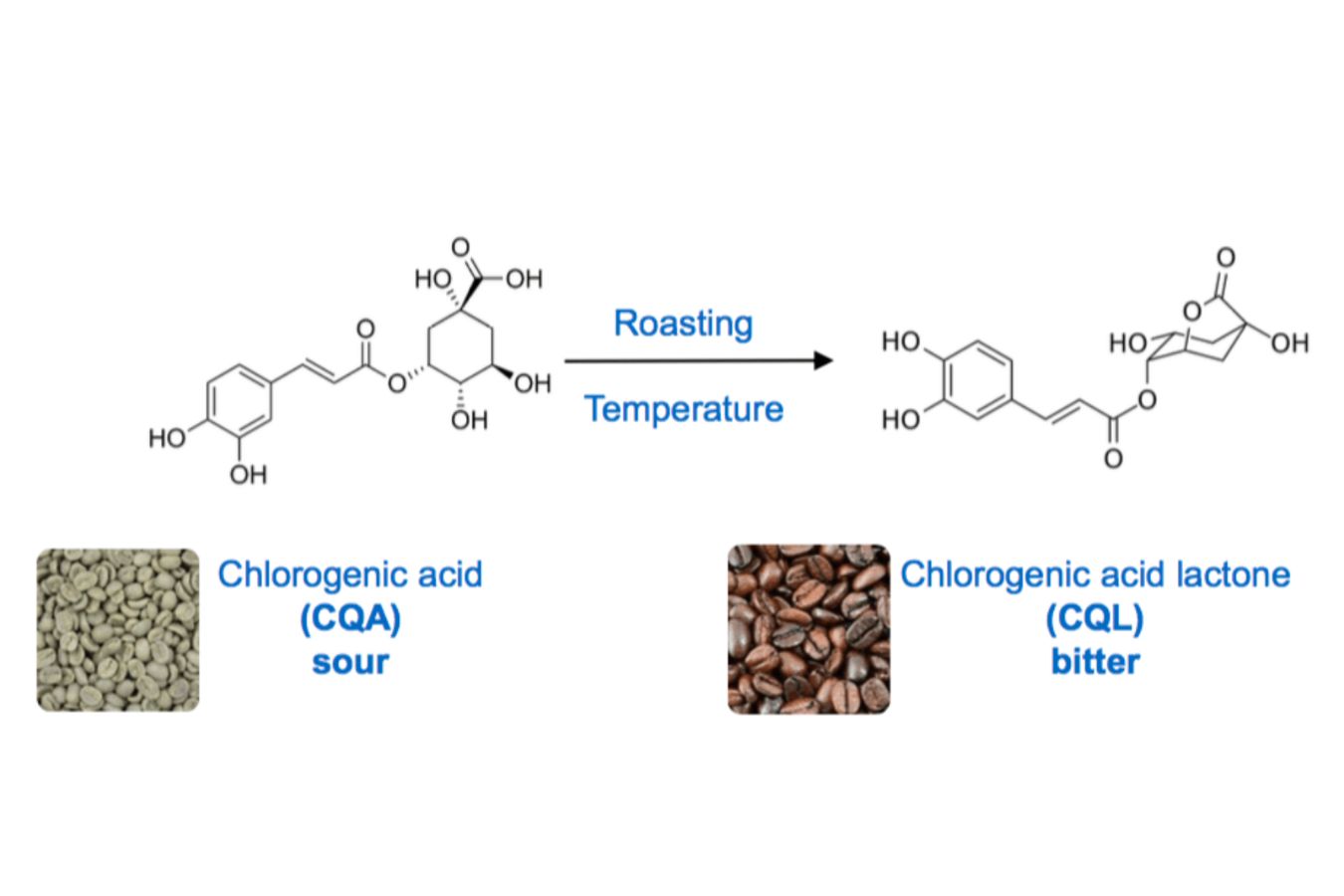
Since the second wave of coffee, as the Specialty Coffee market has grown, quality has become a higher priority at each stage of the supply chain. Roasters and consumers expect more from the coffee taste.
They are willing to pay more for decaffeinated coffee. As the number of Decaf coffee drinkers grows, more roasters will need to respond to this increasingly open market.
Decaf coffee on the health side
This is a broad question with many facets to consider. The essential factor is the sensitivity of each person to caffeine. More specifically, we all possess a particular enzyme called Cytochrome P450 1A2 in our bodies and can metabolize caffeine.
If the metabolism is slower, the body will be more affected by caffeine than other people. How well you metabolize caffeine will dictate how much caffeine can be consumed.
In terms of medicine, quite a few studies and medical reports show that the use of Decaf coffee does not affect users’ health and even has more benefits than regular coffee. Both consumers and professionals turned to decaf coffee when the health-first trend peaked in the 1980s.
